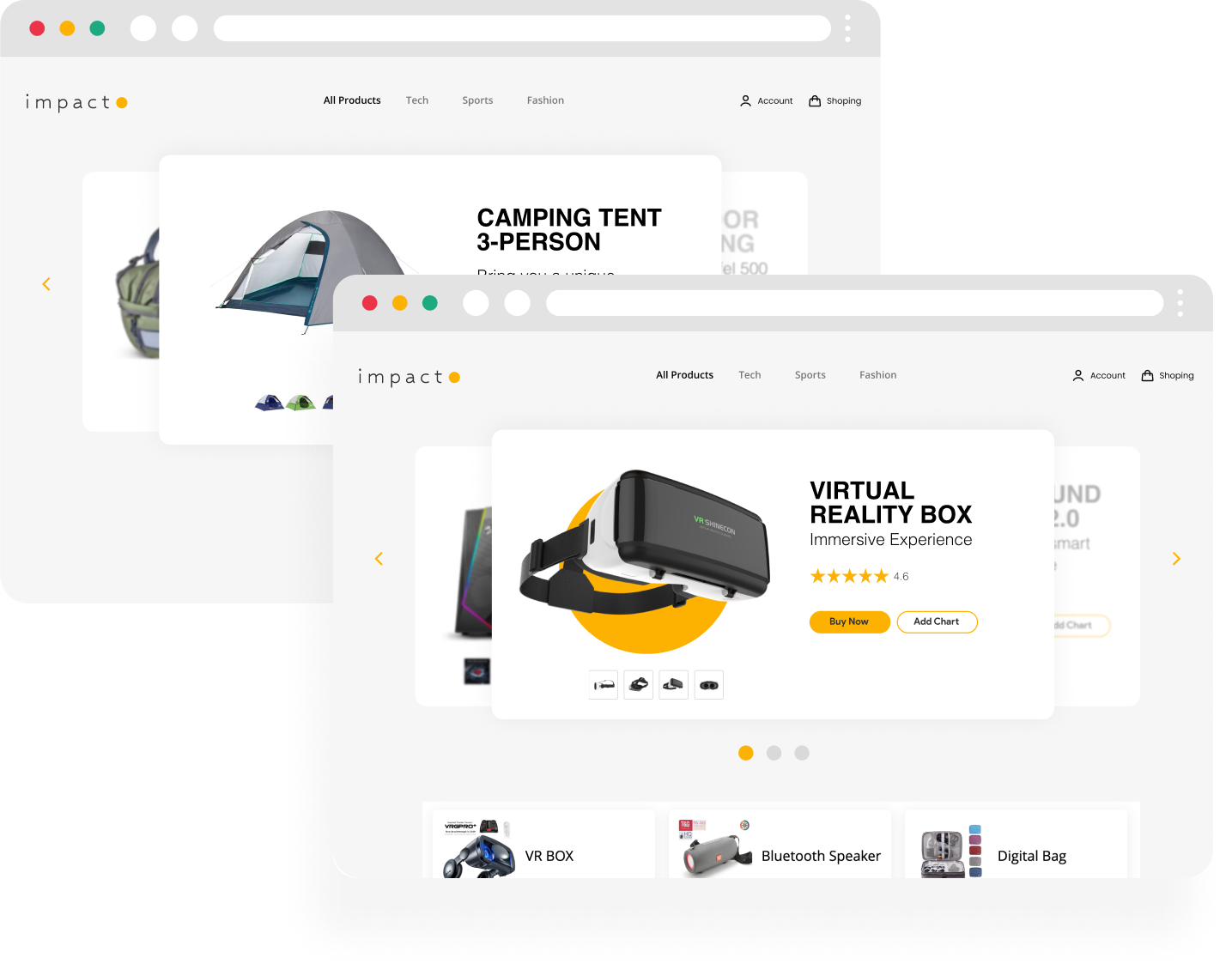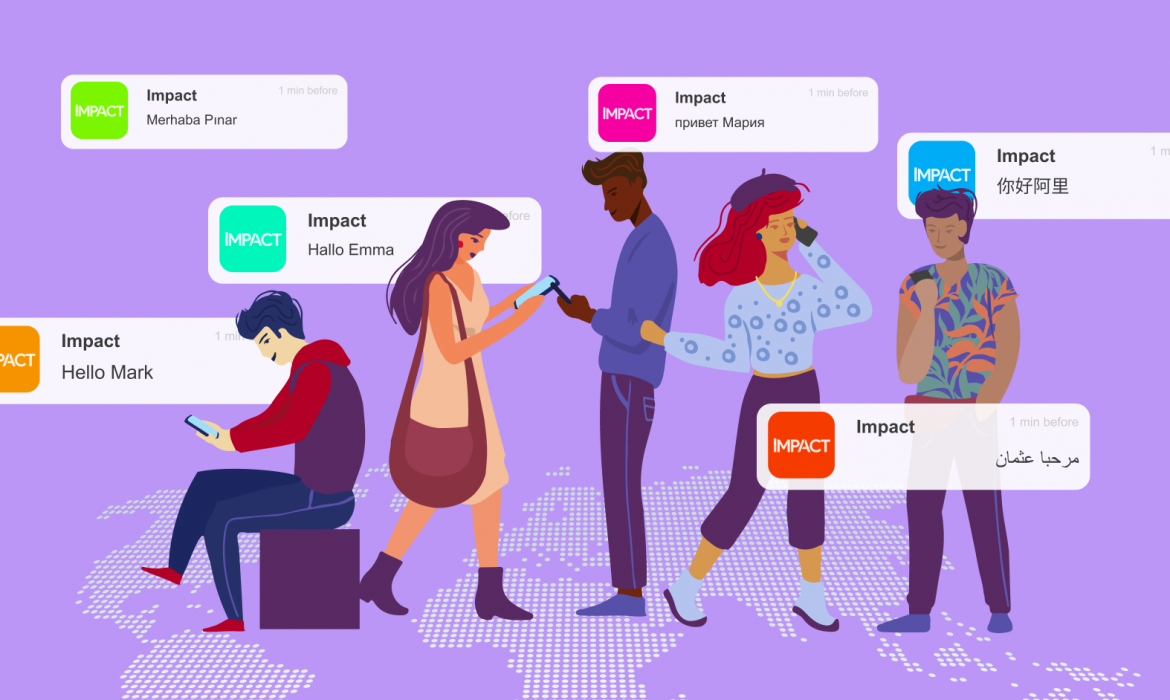Web Personalization is The Key to Growth in Ecommerce
What is Web Personalization?
Personalization in e-commerce is the process of delivering personal experiences by dynamically displaying content, product recommendations, and specific offers based on previous actions, browsing behavior, purchase history, demographics, and other personal data.
Imagine you’re thinking of buying a boat for the winter. You go to a shopping mall, enter a shoe store to see your options, and suddenly a salesperson greets you: “Hello, how may I assist you?”
The next conversations will be probably about what kind of shoe you have in mind, in what price range, what color, which size, and so on. Salesperson will probably recommend shoes that fit your expectations in the store and help you find a match.
Like salespersons that help us through our virtual shopping, we can think of web personalization as the salesperson of the online experiences. Ever wonder how websites design their home pages according to your previous search? That is web personalization, in the simplest way.
Personalization is becoming increasingly important to sellers who not only want to engage shoppers, but also want to increase repeat purchases, sales, and conversions.
It comes in many different forms, from personalized product recommendations on a retailer’s homepage or product detail page, to cart abandonment marketing emails, opt-in quizzes that provide consumers with a personalized product gallery, and many others.
One of the simplest examples of the usage of web personalization is landing pages. According to your search history and purchase behaviors, many websites will land you on a page that you will find interesting. In addition, some websites also can have sections according to your previous visits.

With the help of web personalization, you can arrange different landing pages according to different customers like new visitors and returning visitors.
For example, imagine a customer landing on your website for the first time ever. Your official website page is the page that they will see, but what happens if they stop for a few minutes on an item, and click the reviews, and images? Maybe they even added the item to their basket but they closed the tab a few minutes later.
If the customer decides to come back to the website again, you can make them land on a personalized page where they will see the exact item they have looked at earlier.
And if you happen to have a discount for your website or a free shipping coupon, it is time for you to shine it on.

Customers Expects Personalization from Businesses and Brands
Before the explosion of digital commerce, customers simply walked into stores and found a friendly clerk helping them find what they wanted. However, this kind of personal customer attention is extremely rare in the digital world. Today, many retailers, brands, and B2B companies talk a lot about the need to customize the customer experience.
According to McKinsey & Company’s 2021 report, %71 of customers expect personalization from the companies, and %76 of customers get disappointed when it does not happen.
Web personalization helps you increase sales and customer loyalty.
Personalized experiences help you with sales, and even more – it helps you grow a relationship with your customers and make think of your brand afterward. So, the next time they need similar to the products they have purchased from you, or the services from your business, they come back to your site knowing that they are welcomed and valued.
Personalized experiences help your company to grow faster.
The report says that companies with personalization tactics or actions simply get %40 more revenue. With increased sales and customer loyalty that comes from tailored experiences for your customers, growing your company faster is not a dream anymore.

Personalization Strategies In Ecommerce
The heart of personalization is to reach the goal, to touch the person. These goals should be customer oriented. It’s not just about delivering what your business wants. It’s also about allowing each visitor to consume their experience the way they prefer and helping them achieve their goals at every stage of their journey.
Think of a business you interacted with online, your favorite store, or your bank, and remember the various goals you want to achieve there. Every visitor interacts with businesses in a wide variety of ways, and truly strong personalization looks at who you are, beyond what you’re currently trying to achieve.
When dealing with personal experiences, we suggest you keep it natural and simple. You do not want to be seen as forced, or irrelevant. Here are a few strategies for businesses and brands to use when they want to make it personal:
1. Collect data about users
It is very important to collect the information of users who visit your site, subscribe to your email newsletters, shop from your site, and contact your customer support department, and collect them in a database.
In email subscription or account creation, users will only fill in the necessary information (name, surname, e-mail, etc.). However, your customer support units can get more detailed information about them during the interviews.
When you start collecting user information, you have a chance to reach their demographic information and interests. By analyzing this data, you can make special studies for your users.
2. Keep track of your previous purchases
You should also keep track of which products the users who have shopped from you before are interested in. This way, you can send them cross-sell emails about these products. Or you can make suggestions for products in other categories that may be related to the products they purchased.
Their previous purchases will show you which product categories they are most interested in. Collecting and analyzing this data will help you make personal recommendations to them, both on-site and in email work.
3. Take advantage of retargeting
You can show personalized ads to people who have not yet made a purchase from your site but have visited your site. Users may leave the site for any reason without completing the payment process. By making use of Retargeting ads, you can show these people ads about the products they are interested in on different platforms.
Retargeting ads are automatically created according to the products that visitors are interested in and visit on the site. In this case, if you make the necessary adjustments on your site, you have the chance to attract visitors who leave your site to the site by showing ads on different platforms.
Netmera Solution
At Netmera, we help you grow your businesses with the right solutions to your problems.
With our web personalization product, you can deliver customized landing pages, CTA’s, and communications tailored to your customers and their specific needs. And don’t forget that you can make your website personalized to your customers without the need for coding.

